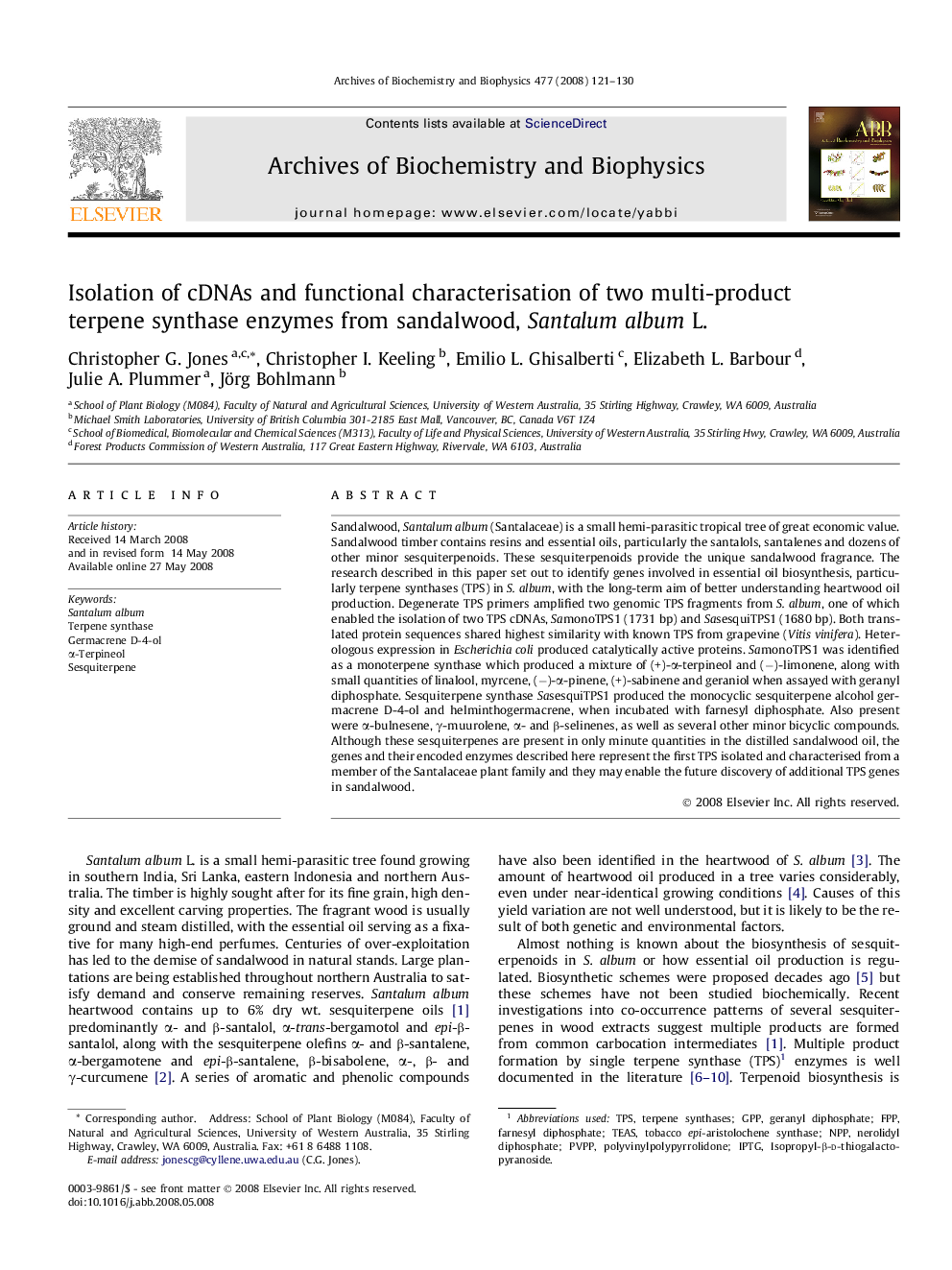| Article ID | Journal | Published Year | Pages | File Type |
|---|---|---|---|---|
| 1926623 | Archives of Biochemistry and Biophysics | 2008 | 10 Pages |
Sandalwood, Santalum album (Santalaceae) is a small hemi-parasitic tropical tree of great economic value. Sandalwood timber contains resins and essential oils, particularly the santalols, santalenes and dozens of other minor sesquiterpenoids. These sesquiterpenoids provide the unique sandalwood fragrance. The research described in this paper set out to identify genes involved in essential oil biosynthesis, particularly terpene synthases (TPS) in S. album, with the long-term aim of better understanding heartwood oil production. Degenerate TPS primers amplified two genomic TPS fragments from S. album, one of which enabled the isolation of two TPS cDNAs, SamonoTPS1 (1731 bp) and SasesquiTPS1 (1680 bp). Both translated protein sequences shared highest similarity with known TPS from grapevine (Vitis vinifera). Heterologous expression in Escherichia coli produced catalytically active proteins. SamonoTPS1 was identified as a monoterpene synthase which produced a mixture of (+)-α-terpineol and (−)-limonene, along with small quantities of linalool, myrcene, (−)-α-pinene, (+)-sabinene and geraniol when assayed with geranyl diphosphate. Sesquiterpene synthase SasesquiTPS1 produced the monocyclic sesquiterpene alcohol germacrene D-4-ol and helminthogermacrene, when incubated with farnesyl diphosphate. Also present were α-bulnesene, γ-muurolene, α- and β-selinenes, as well as several other minor bicyclic compounds. Although these sesquiterpenes are present in only minute quantities in the distilled sandalwood oil, the genes and their encoded enzymes described here represent the first TPS isolated and characterised from a member of the Santalaceae plant family and they may enable the future discovery of additional TPS genes in sandalwood.
